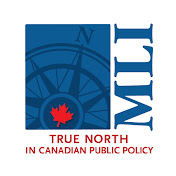In the lead-up to most elections, pollsters and pundits usually have a good idea of what is most likely to happen.
We rely on signals beyond the popular vote race to form our assessments — signals like historical precedent, the mood of the electorate, economic performance, incumbency, inertia, and the desire for change.
If these all point in the same direction and are reinforced by popular vote polling, the election is generally easier to call. The recent Ontario election is a good example of this: beyond the double-digit lead for the Progressive Conservatives in the polls at the outset of the campaign, 46 per cent believed the Ford government deserved re-election, 57 per cent approved of Doug Ford’s performance as premier, and Ford was named as best to lead on all the issues that mattered most, including Trump and the economy.
However, if the signals point in opposite directions, an election outcome becomes more difficult to forecast.
Story continues below advertisement





![COMMENTARY: Why this election might be hard to predict – National [Video]](https://canadanewsvideo.com/wp-content/uploads/2025/03/mp_744977_0_federalpartyleaderscomposite3jpg.jpg)




![Soaring number of Alberta measles cases worries health officials in both Canada, U.S. [Video]](https://canadanewsvideo.com/wp-content/uploads/2025/05/mp_765552_0_cbsmeasles31jpg.jpg)
![Starbucks baristas strike in protest of new dress code [Video]](https://canadanewsvideo.com/wp-content/uploads/2025/05/mp_765546_0_d419ab0866b743d3895c6a61cdf1de2a1140x641jpg.jpg)
![Maine business owners brace for summer hiring season amid uncertainty [Video]](https://canadanewsvideo.com/wp-content/uploads/2025/05/mp_764101_0_4203017720250507summerhiring2jpg.jpg)
![Daughter of late Indian City founder Vince Fontaine finishes song he started writing for his mom [Video]](https://canadanewsvideo.com/wp-content/uploads/2025/05/mp_763933_0_vincefontaineonguitarjpg.jpg)
